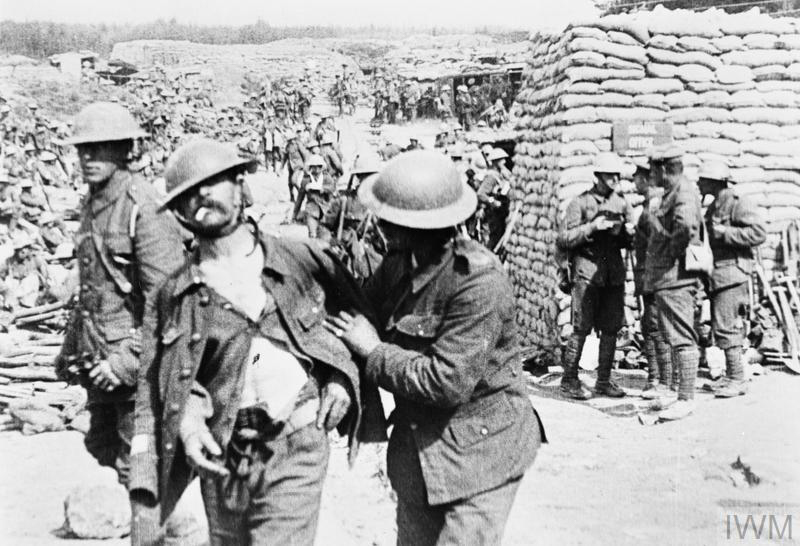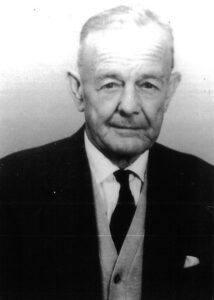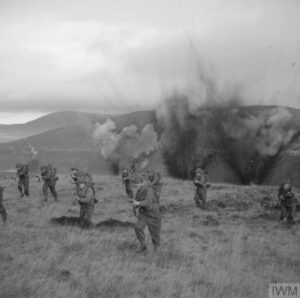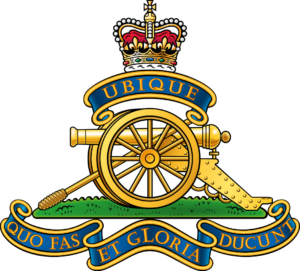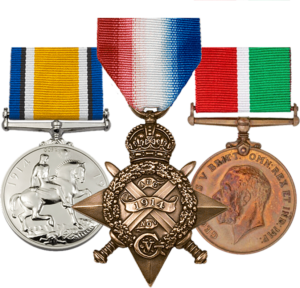John joined the Royal Navy on 27 June 1911, enlisting for a period of 12 years (service number K 11650). After six months of training as a stoker he joined the crew of the brand-new battleship HMS Orion as it joined the fleet in January 1912. John only served onboard for around six weeks however, before being moved ashore and discharged due to “neurasthenia”. At the time this was a loose term used to describe any number of mental health issues that had yet to be properly understood.
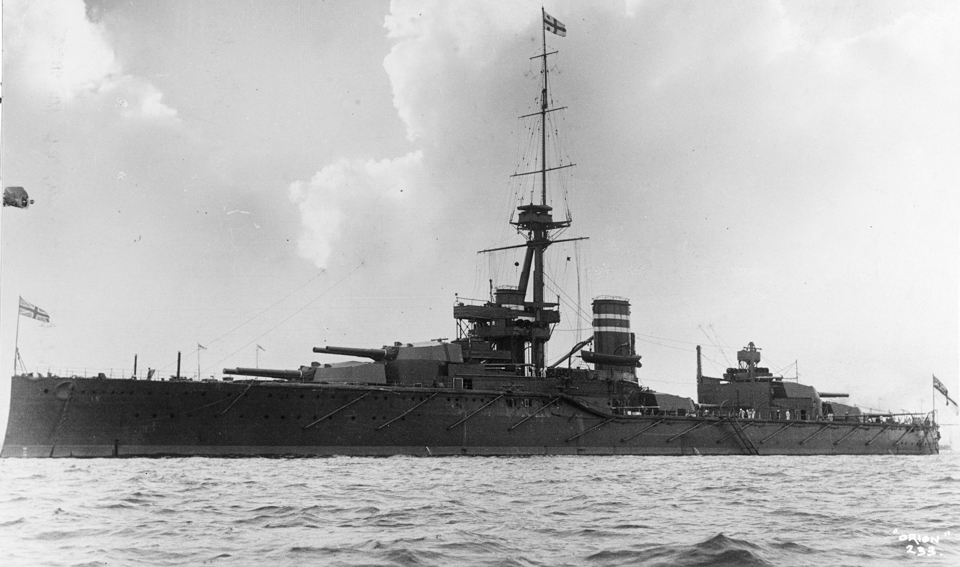
To the Western Front
Just two weeks after the outbreak of war with Germany in 1914 John enlisted into the Royal Garrison Artillery. He was given service number 42323 and described as 5 feet 9 inches tall with grey eyes, black hair, and a dark complexion. His service record is a little unclear, but he was posted to France almost immediately and arrived on 3 October 1914 with the 116th Heavy Battery.
The 116th participated in the First Battle of Ypres with 4th Corps until 22 November when it moved to Nieppe. John appeared to be admitted to a field hospital in Rouen in early December due to “N.Y.D. Nervous”, which meant a not-yet-diagnosed nervous condition, and possibly a gunshot wound to the hand.
Over 250,000 men suffered from ‘shell shock’ during the First World War. The term was not coined until 1915 and at the time it was believed to result from a physical injury to the nervous system during a heavy bombardment or shell attack. It later became evident that men who had not been exposed directly to such fire were just as traumatised. This was a new illness that had never been seen before on this scale. The condition was poorly understood medically and psychologically. Today, the condition is known as post-traumatic stress disorder and the treatment and attitude to it are very different.
There are extensive medical notes in John’s service file that are sadly too faded to be legible, but it appears that he returned to his unit. He was sent back to the UK in October 1915 after being shot in the leg and shoulder. After recuperating in a London hospital, he served at No. 2 Depot (Heavy and Siege) at Fort Brockhurst, Gosport. He returned to France in April 1916 to join the 48th Heavy Battery. During this time the battery supported the Somme offensive. John remained in France for a year before once again returning home after again being hospitalised for “NYD”.
John was discharged on 14 April 1918 due to ‘mania’ and he is cited as ‘insane’ in an army register created to record the monetary effects of deceased and insane soldiers. He was awarded the Silver War Badge – a pin worn on civilian clothes after early discharge from the army. John returned to live with his mother in the Manningham area of Bradford.
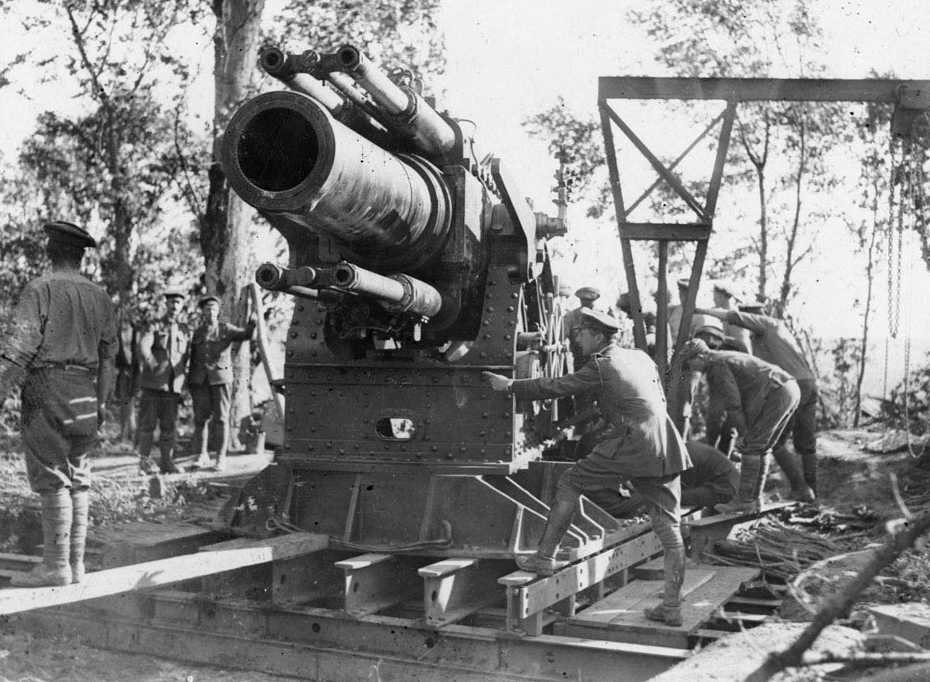
The Territorial Force
Despite his ordeal, John re-enlisted into the Territorial Force of the army on 15 October 1920, joining the Queen’s Own Yorkshire Dragoons with service number 395311. He seems to have lied about the reason for his previous discharge, stating it was due to a broken leg. He only served for one year and was discharged on 14 October.
Units
- HMS Orion (1912), Royal Navy
- 116th Heavy Battery, Royal Garrison Artillery (1914-1915)
- 2 Depot (Heavy and Siege) (1915-1916)
- 48th Heavy Battery, Royal Garrison Artillery (1916-1917)
- Queen’s Own Yorkshire Dragoons (1920-1921)
Medals




